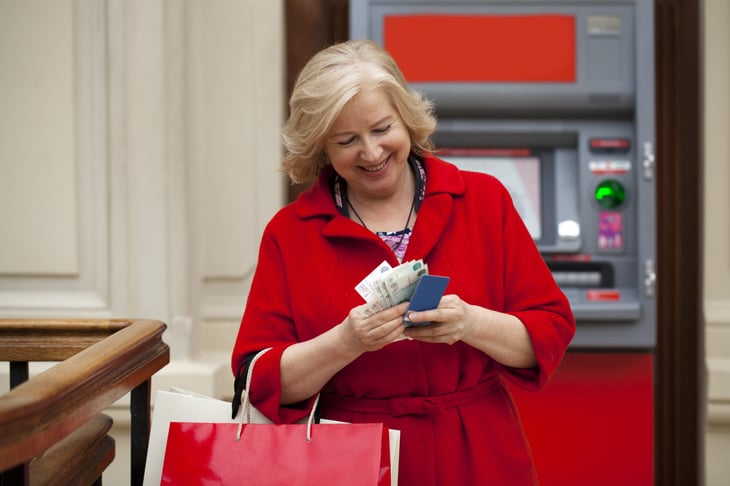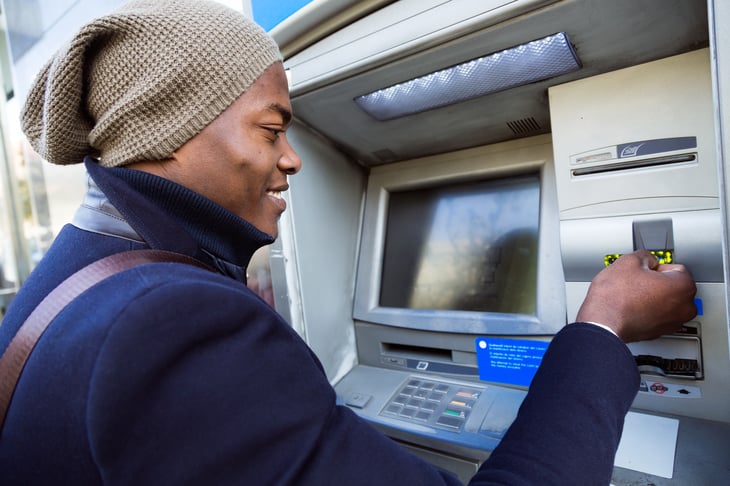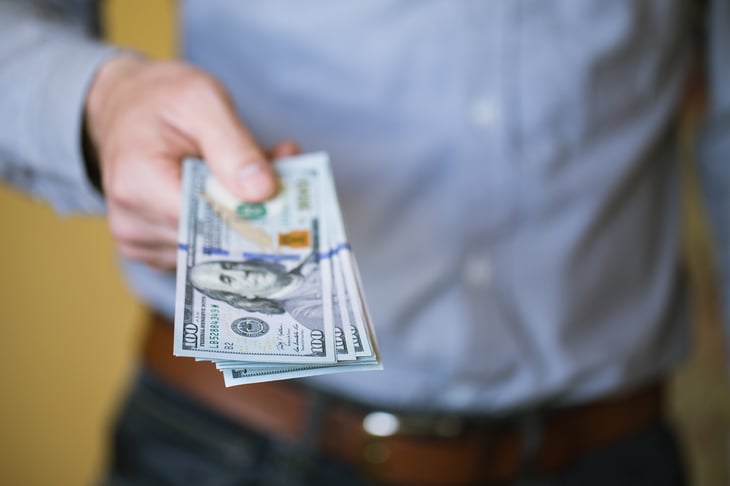
Editor's Note: This story originally appeared on The Penny Hoarder.
Airline tickets, checked bag fees, hotel bookings, outrageous rental car prices — these are the vacation costs you’ve probably budgeted for. But when you travel abroad, you may also need to plan for foreign transaction fees every time you swipe your card.
Some debit and credit card issuers offer cards without any foreign transaction fees, but if you don’t have one of these in your wallet, you could spend upwards of 4% of the total transaction price each time you buy a cup of gelato, purchase a ticket to a museum or swipe your card to use the train system.
Not keen on throwing away your vacation budget on fees that add no value to your travel experience? We’ll cover how foreign transaction fees work, how much they cost, and most importantly, how to avoid foreign transaction fees altogether.
What Is a Foreign Transaction Fee?

A foreign transaction fee is a surcharge assessed by a bank or credit card issuer when you make a purchase in a country outside of the United States. Not every bank and credit card issuer charges a foreign transaction fee, so it’s a good idea to research such fees before opening an account or credit card.
While we typically think about foreign transaction fees being assessed when we’re traveling abroad, you may also pay a foreign transaction fee when shopping online with an international vendor. In fact, any time your purchase is routed through a foreign bank, a foreign transaction fee may apply.
How Much Do Foreign Transaction Fees Cost?

Foreign transaction fees generally cost between 1% and 4% of the transaction. For example, if you charge $100 on your credit card in a foreign country, you’ll pay the $100 that is owed to the merchant, but you might also pay $1 to $4 extra in foreign transaction fees, depending on the rate assessed by your bank or credit card issuer.
Not sure how your credit or debit card issuer calculates foreign transaction fees? Head to the website or pull out your paperwork from when you first opened the account.
International transaction fees are typically buried in the fine print of the account’s terms and conditions. Online, you might find the surcharge details under the bank’s “Rates and Fees” section.
Though foreign transaction fees don’t change as frequently as a bank account’s APY or credit card’s APR, financial institutions and credit card issuers do reserve the right to change their foreign transaction fee structure. It’s a good idea to check card details ahead of any international trip so you know what to expect — and see if anything has changed since your last time abroad.
You usually won’t be spending U.S. dollars when swiping your debit card or credit card in another country. Instead, prices may be in euros, pesos, yen, or another denomination.
Foreign Transaction Fees vs. Currency Conversion Fees

While your credit card or bank may advertise its foreign transaction fee as a single percentage, it’s actually composed of two separate fees:
- Currency conversion fee: Also called a network fee, the currency conversion fee is the charge assessed by the credit card network, such as Visa or Mastercard. Both Visa and Mastercard currently charge a 1% fee for every foreign transaction. As the name implies, this is a fee for converting your money (or credit) from U.S. dollars to the currency of the country you’re in.
- Bank fee: Banks like Citi, Capital One and Chase issue credit cards, and they can tack on their own fees separate from the network fee. These are usually 2% to 3% of all foreign transactions.
Not every credit card issuer charges the bank fee — instead, they may only charge you the currency conversion fee that the network is charging them. Other card issuers don’t charge you any fee at all; instead, they absorb the currency conversion fee and market their credit cards as having no foreign transaction fees.
Typically, travel credit cards that don’t charge foreign transaction fees are reserved for borrowers with good or excellent credit.
When traveling abroad, some merchants may offer to convert the currency to U.S. dollars for you before you pay. This is called dynamic currency conversion — and it’s expensive.
While this option lets you see how much money you’re actually spending (otherwise, you’ll have to wait for your debit or credit card statement), dynamic currency conversion fees are exorbitant, sometimes up to 12%.
Our take? Never say yes to dynamic currency conversion! Even if you’ve only got credit and debit cards that charge a foreign transaction fee, it’ll still be cheaper than what the merchant will charge you.
How Can I Avoid Foreign Transaction Fees?

If you don’t want to incur foreign transaction fees when spending money abroad, you have a few options. Consumers who regularly travel internationally should consider opening a credit card without foreign purchase transaction fees, but other options include avoiding ATMs and relying on cash exchanged before you even start your vacation.
Get a Checking Account, Debit Card or Credit Card with No Foreign Transaction Fees

The simplest way to avoid foreign transaction fees? Open a credit card that doesn’t charge foreign transaction fees.
Some of our favorite credit cards without a foreign transaction fee include the Capital One Quicksilver Cash Rewards Credit Card, Chase Sapphire Preferred Card, Bank of America Travel Rewards credit card, Discover it Miles Card and Citi Premier Card.
Need help narrowing it down? Check out our ranking of the best credit cards with no foreign transaction fees to figure out which offers the right blend of perks, rewards and fees for your travel needs.
Because credit card issuers typically want to see strong credit scores and/or charge annual fees for their credit cards with no foreign transaction fees, such cards may not be the right option for you.
If you’ll be traveling abroad regularly and want to use a card without racking up foreign transaction fees, look for checking accounts that come with debit cards that you’re free to use internationally without a surcharge.
Don’t Use International ATMs Without Checking Fees First

Even if you have a debit card or credit card that doesn’t charge foreign transaction fees, you can still get slapped with some unexpected fees when banking abroad — specifically at the ATM. If you withdraw money from an international ATM, you might have to pay:
- ATM fees: ATMs charge fees for their usage. Here in the U.S., you likely have specific ATMs that you can use without incurring a fee; these ATMs are called “in-network ATMs.” Most checking accounts offer a U.S.-based network of ATMs, and some of the best checking accounts offer ATM fee reimbursement when you use an ATM out of network. But most limit that to the U.S.; only a handful of checking accounts offer unlimited ATM fee reimbursement worldwide.
- Currency conversion fees: If you withdraw money from a foreign ATM, you’ll likely want that money in the currency of the country you’re visiting. But the money sitting in your bank account back home is in U.S. dollars. Just as credit card networks charge a currency conversion fee every time you swipe your card abroad, foreign ATMs charge a fee for changing your money over from USD.
These ATM fees may be unavoidable, so it’s a good idea to ask your bank for information about international ATMs — before you board your flight. Customer service might be able to point you to certain partner banks or ATMs where fees will be lower.
Exchange Cash Before Leaving the United States

If you don’t have a credit card or debit card with no foreign transaction fees, your best bet is paying with cash in foreign currency. The problem? You’ll pay high exchange rates at airports, hotels and train stations — all the convenient places you’ll be during your trip.
Instead, plan ahead by visiting a local bank or credit union before your trip. Though you will still pay a fee, you can exchange your cash for foreign currency much more affordably here. If you run out of cash during your trip, visit a foreign bank for lower conversion fees.
It might be a little out of your way (and a little frustrating) to find a brick-and-mortar bank in a foreign country, but if you can spare the time, you’ll save money at a bank compared to exchanging at a transit station or hotel.
Despite the currency conversion fees, ATMs are often a better deal than currency exchanges at airports, hotels and train stations.
Foreign Transaction Fees: What You Need to Know

A foreign transaction fee applies to purchases made with a debit or credit card in another country (or even when making online purchases from foreign merchants using your debit or credit card).
A typical foreign transaction fee is between 1% and 4% of the credit card transaction, but many top travel credit cards waive foreign transaction fees entirely — usually as a compelling selling point to borrowers with good or excellent credit.
Before traveling out of the country, it’s a good idea to check if your debit or credit card issuer charges foreign transaction fees and devise a plan to avoid them if so.
Opening a new credit card without fees for foreign transactions is the easiest solution, but if you can’t qualify for or don’t want a new card, it’s a good idea to carry lots of cash in the currency of the country you’re visiting — and exchange for that cash at a local bank before your trip.





Add a Comment
Our Policy: We welcome relevant and respectful comments in order to foster healthy and informative discussions. All other comments may be removed. Comments with links are automatically held for moderation.